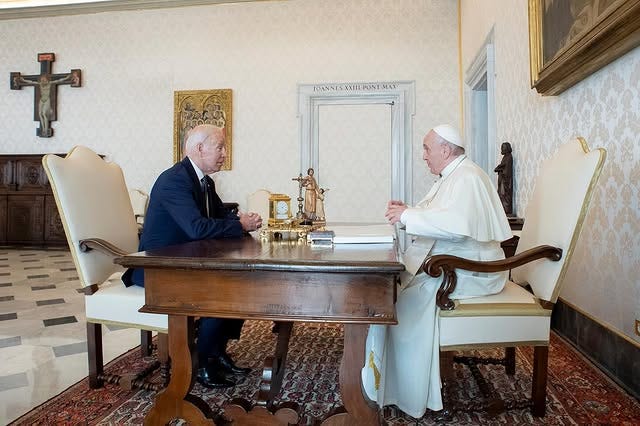The death of the “People’s Pope”
From the moment he stepped onto the balcony in simple white robes, Pope Francis signaled a papacy defined not by power, but by compassion, humility, and a bold vision for a more inclusive church.
In his statement following the passing of Pope Francis, former President Biden called the Holy Father the “People’s Pope” — a fitting tribute to a leader whose humility was matched only by his transformative vision for the Church.
Born as Jorge Mario Bergoglio on December 17, 1936, Pope Francis began his religious career as a Jesuit priest. Jesuits are part of a religious order within the Catholic Church and commit their lives to missionary work and social justice.
From the very beginning of his papacy, Pope Francis shed many long-held traditions for his office, ditching the extravagant robes and designer shoes for humble white garments and black slippers. Even his choice of papal name was a signal to Catholics worldwide about his personal philosophy. Saint Francis of Assisi, who Bergoglio chose for his name is widely known for his radical poverty and love of nature.
As an institution that can trace its roots back almost 2000 years, the Catholic Church has historically not been a place for progressive change. Yet, under the leadership of Pope Francis, the church took many strides to modernize their positions on issues from divorce, LGBTQ rights, foreign policy, and the role of women in the church. Even on foreign trips, Francis would often break protocol and ditch the safety of his Popemobile to personally greet adoring crowds, a stark contrast to his more reserved and conservative predecessor.
Near the end of his time as Holy Father, Francis never wavered from his progressive vision. According to Vatican officials, Pope Francis would regularly call the Holy Family Church located in Gaza, Palestine on a nightly basis. He cared deeply for the plight of the poor, sick, and hungry, embodying the true message at the core of Christianity.
With the passing of Pope Francis, the Catholic Church’s future is uncertain. There are roughly 8.5 million Catholics located in Texas alone, many who will now enter a period of mourning until a new Pope is chosen. The process of choosing a new Pope is known as the Conclave, where members of the College of Cardinals, the Church’s top leaders, will meet to cast secret ballots until a new Pope is elected by a 2/3 majority. This process can last days, sometimes weeks, leaving Catholics worldwide without a spiritual leader during a period known as Sede Vacante or “vacant seat.”
While we don’t know who will succeed Francis, he has appointed roughly 80% of the current members of the College of Cardinals who will decide the next Pope. But no matter who succeeds him, one thing is clear: Pope Francis has undeniably left his mark on the Church and its 1.4 billion members.




